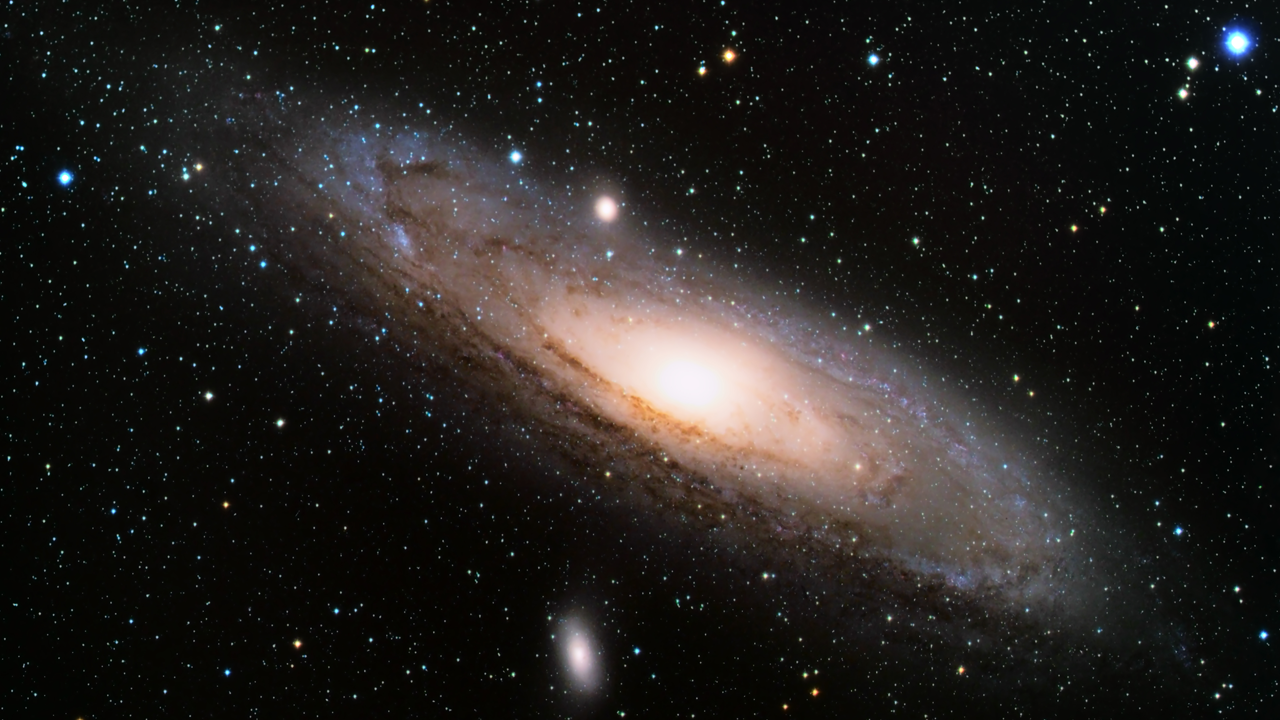
Ever look up into the sky and wonder what distant worlds are like? Galaxy Nurseries, a new project at the University of Minnesota, invites you to help researchers discover thousands of young galaxies across the universe and, in doing so, learn more about our own.
The project is a sign of just how far research methods have come in the field of citizen science—where volunteers across the world contribute to scientific data collection and analysis. Galaxy Nurseries, which went live on Wednesday, was the 100th project to launch on the Zooniverse, the largest and most widely-used online citizen science platform, which has connected hundreds of thousands of volunteers to active research projects since it formed in 2009.
Lucy Fortson, Ph.D., one of the cofounders of the Zooniverse and the associate head of physics and astronomy in the U’s College of Science and Engineering, said including the public in scientific research opens new opportunities in research across a wide range of disciplines.
“What’s so valuable about citizen science is that it allows research to expand beyond its traditional limitations, both in the magnitude of research effort and in its ability to engage the public,” said Fortson, who has played a key role integrating citizen science into the U research community through its Zooniverse@UMN initiative. “With the advent of technologies and platforms that reduce the barriers to creating new projects, we’re seeing citizen science evolve into a more accessible and widely-adopted research practice.”
Among the platforms lowering the technological hurdles is the Zooniverse’s Project Builder tool, which now allows researchers to set up their own projects without needing the web development expertise or the funding that creating these projects used to require. Claudia Scarlata, Ph.D., principal investigator on the Galaxy Nurseries program, said the tool was invaluable in launching her new project.
“The Project Builder was instrumental during both the initial project development and the beta-review process,” said Scarlata, an associate professor of physics and astronomy in CSE. “The ability to rapidly prototype new ideas with a few operations in the web browser is invaluable and the flexibility of the drawing tools available allowed us to explore several more complicated classification strategies quickly and easily.”
While big efforts are underway at the U, its focus on citizen science isn’t limited to the University community. The U recently collaborated with the Citizen Science Association to bring CitSci2017 to St. Paul. This global conference gathered scientists, community members, and educators to explore how citizen science is being used across disciplines, geographic boundaries, and scientific fields. The event included the Create Together Day, hosted at the U of M, which brought technology enthusiasts together into a single workspace to dream up new tools and platforms for citizen science.
Discovering Distant Worlds
As the Galaxy Nurseries project takes off, Scarlata hopes to discover thousands of young galaxies we didn’t know about before.
Her project uses both regular images and spectra (the intensity of light at each of the wavelengths, or colors, that compose it) that the Hubble Space Telescope captured of hundreds of regions in space. The images can reveal the locations of new galaxies, while the spectra give researchers the data they need to measure how far these galaxies are away.
Different elements on the periodic table, such as oxygen and hydrogen, have different “signatures” on a galaxy’s spectrum. Changes in the color of these signatures can indicate how fast the galaxy is moving, giving researchers the data they need to calculate its distance from Earth. Volunteers in the project will investigate computer analyses of galaxy spectra to separate the accurate ones from the mistakes for Scarlata and her team.

Apart from its distance, spectra can also tell researchers about other features of a galaxy. For example, the presence of hydrogen and oxygen emissions in the spectra lines are the calling cards of young stars in the galaxy, which burn especially hot and create these spectra by heating surrounding gases past a specific point.
Scarlata said the project’s results could also inform the development of two NASA telescope missions set to launch in the coming decade: the WFIRST and the Euclid. Similar to Galaxy Nurseries, both missions will record spectra data from across the cosmos.
“Our project will help us uncover thousands of galaxies, observed as they were 5 to 7 billion years ago, when the universe was most actively forming stars,” Scarlata said. “The small galaxies that we will detect are thought to be the building blocks of the beautiful spiral and elliptical galaxies that we see in the local Universe. Thus, by observing how they change as the Universe ages, we are learning how our own galaxy grew over time.”
For more on the Galaxy Nurseries project, see the press release.